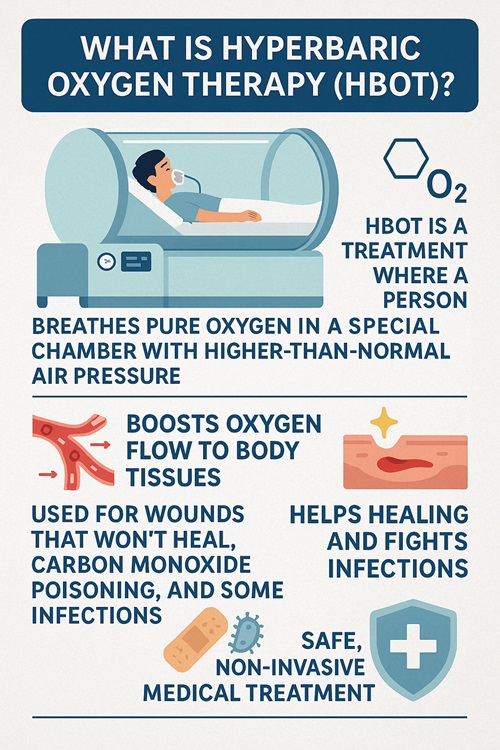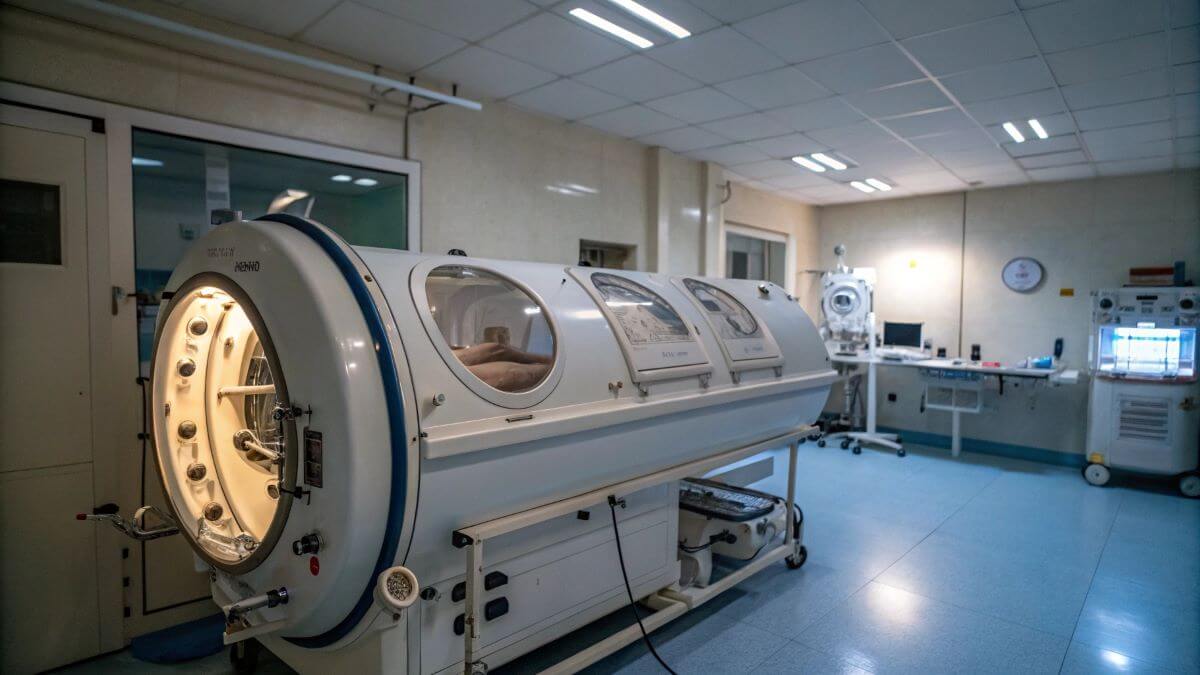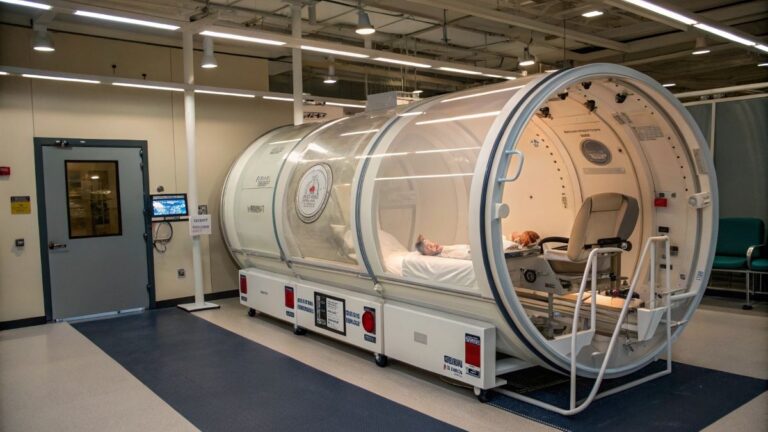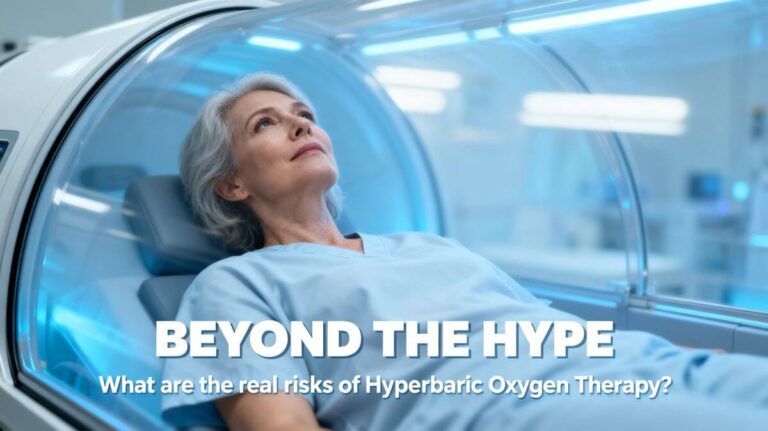Understanding the safety profile, potential side effects, and appropriate uses of pressurized oxygen treatment for various medical conditions
The recent tragic incident on January 31, 2025, where a 5-year-old child, Thomas Cooper, died in a hyperbaric chamber fire at the Oxford Center in Troy, Michigan have raised significant safety concerns through the medical community. This heartbreaking event has prompted many to question the safety of a treatment that, according to medical consensus, is generally considered safe when properly administered.
Hyperbaric Oxygen Therapy (HBOT) has seen surging interest in recent years, with patients seeking it out for everything from wound healing to concussion recovery and various chronic conditions. But behind the testimonials and clinical success stories lies an important question that deserves thorough examination: Just how safe is HBOT, really?
In this article, we’ll dive deep into the risks and benefits of hyperbaric oxygen therapy, examining who should consider it, who should avoid it, and how to ensure you’re receiving treatment safely if you do pursue this option.
What Exactly Is Hyperbaric Oxygen Therapy?

HBOT involves breathing pure oxygen in a pressurized environment. Patients enter a special chamber where the atmospheric pressure is increased to 1.5 to 3 times normal levels, allowing the lungs to gather much more oxygen than would be possible under normal conditions.
This process increases oxygen dissolution in the blood, promoting healing by enhancing tissue repair, reducing inflammation, and fighting infections.
The therapy is delivered in two main types of chambers: monoplace (for one person, resembling an MRI machine) and multiplace (accommodating multiple patients with oxygen masks or hoods).
The FDA has approved HBOT for several specific conditions, including: [1]
- Air and gas bubbles in blood vessels
- Anemia (severe anemia when blood transfusions cannot be used)
- Burns (severe and large burns treated at a specialized burn center)
- Carbon monoxide poisoning
- Crush injury
- Decompression sickness (diving risk)
- Gas gangrene
- Hearing loss (complete hearing loss that occurs suddenly and without any known cause)
- Infection of the skin and bone (severe)
- Radiation injury
- Skin graft flap at risk of tissue death
- Vision loss (when sudden and painless in one eye due to blockage of blood flow)
- Wounds (non-healing, diabetic foot ulcers) [[
However, many clinics also offer HBOT for “off-label” uses = conditions for which the FDA hasn’t specifically approved this treatment.
These include autism, Lyme disease, fibromyalgia, multiple sclerosis, PTSD and more recently, Long COVID symptoms. [2]
Key Concerns of HBOT
“But isn’t pure oxygen dangerous? I’ve heard it can cause fires!”
It’s true that oxygen itself doesn’t burn, but it vigorously supports combustion, making fire hazards a legitimate concern in HBOT environments. This is precisely why reputable facilities have strict protocols about what can be brought into chambers.
Common Side Effects
Most people tolerate HBOT well, but some common side effects include:
- Ear pressure or pain (barotrauma)
- Temporary nearsightedness (myopia)(often nearsightedness, resolving within weeks)
- Sinus discomfort
- Fatigue
- Lightheadedness
- Claustrophobia in confined chambers
These are generally mild and transient, affecting a significant portion of patients, with studies like a 2023 meta-analysis in Frontiers in Medicine reporting a 30.11% incidence rate compared to 10.43% in control groups.
(Ed. note: These effects are typically mild and resolve soon after treatment ends)
Serious Risks (Rare but Notable)
While uncommon, more serious risks do exist:
- Oxygen toxicity, which can cause seizures
- Collapsed lung (pneumothorax)
- Air embolism
- Fire or explosion (due to the oxygen-enriched environment)
- Damage to the ears, including potential rupture of the eardrum
- Lung damage from prolonged exposure
- Temporary worsening of certain eye conditions like cataracts or glaucoma
(Ed. note: The risk of fire, while extremely rare, underscores the importance of only receiving treatment at facilities with proper safety protocols and emergency procedures.)
The level of risk varies based on several factors, including: [1]
- Treatment duration and frequency
- Pressure levels used
- Individual health conditions
- Quality of equipment and facility
- Staff training and experience
What You Can’t Take Into an HBOT Chamber
Safety protocols strictly prohibit bringing certain items into hyperbaric chambers: [3]
- Electronic devices (phones, watches, hearing aids)
- Petroleum-based products (lip balm, makeup, oil-based lotions)
- Synthetic clothing (due to static electricity risk)
- Flammable materials of any kind
- Certain medications (particularly those containing alcohol – e.g., doxorubicin
- Metal objects that could create sparks
Who Should Avoid HBOT?
HBOT is not suitable for everyone. The only absolute contraindication is untreated pneumothorax, as pressure changes can lead to life-threatening tension pneumothorax, according to StatPearls.
Relative contraindications include:
- Untreated pneumothorax (collapsed lung)
- Certain chemotherapy drugs (particularly bleomycin, doxorubicin, and cisplatin)
- Recent ear surgery or injury
- High fever
- Severe congestive heart failure
Special care must be taken with:
- Children (whose bodies may respond differently to pressure changes)
- Elderly patients (who may have multiple health conditions)
- Pregnant women (though HBOT is used in some high-risk pregnancy situations)
- People with claustrophobia
- Patients with certain lung diseases
- Those with implanted devices like pacemakers
How to Minimize Risks If Considering HBOT
To ensure safety, choosing a reputable clinic is critical. Look for accreditation by the Undersea and Hyperbaric Medical Society (UHMS), as recommended by the FDA, and verify that the medical director is board-certified in hyperbaric medicine.
Pre-treatment screening, including medical evaluations to identify contraindications, is very important, and continuous monitoring during therapy by trained professionals helps mitigate risks. For example:
- A thorough medical evaluation
- Ear examination
- Chest X-ray (in some cases)
- Review of all medications and supplements
- Clear explanation of what to expect and potential side effects
Look for these positive indicators:
- Accreditation by the Undersea and Hyperbaric Medical Society (UHMS)
- Treatment overseen by board-certified hyperbaric medicine physicians
- Clean, well-maintained facilities with proper emergency procedures
- Transparent discussion of both benefits AND risks
Avoid facilities that:
- Make exaggerated claims about HBOT “curing” conditions
- Offer treatment without proper medical screening
- Lack emergency protocols or equipment
- Employ staff without specialized HBOT training
Questions to Ask Your Provider
Before treatment, ask:
- What specific safety protocols are in place?
- What training do your staff members have?
- What emergency procedures exist?
- How will my particular health conditions be monitored during treatment?
- What are the specific risks for someone with my medical history?
Choosing a Safe HBOT Provider
Your options typically include:
Hospital-based facilities: Generally the safest option, with full medical support and emergency services immediately available. These primarily offer treatment for FDA-approved conditions.
Private clinics: Quality varies significantly. Look for clinics affiliated with hospitals or with UHMS accreditation and medical supervision.
At-home chambers: These portable units operate at lower pressures and carry significant risks if not properly maintained or used. Many experts advise against them due to safety concerns and limited effectiveness at lower pressures.

“So, does this mean that I can’t buy a hyperbaric oxygen therapy chamber for home use?”
Not necessarily. Reputable manufacturers of home HBOT chambers like HyperbaricPRO incorporate numerous safety features that significantly reduce risks when used properly. For example:
- Penta heat-welded seams that avoid toxic glues and ensure structural integrity.
- Advanced ventilation systems that prevent carbon dioxide buildup, with 5-stage carbon filtration to remove airborne pollutants down to the micron level.
- Dual pressure relief valves (both internal and external) that allow for safe depressurization from either inside or outside the chamber.
- Emergency quick-release valves for rapid depressurization in urgent situations.
- Internal pressure gauges allowing users to monitor pressure levels while inside.
- Medical-grade materials such as certified nontoxic, extra-strength 3-layer TPU reinforced with Dacron (a polyester material used by NASA in space suits).
- Durable construction, with some chamber reservoirs rated to last up to 39 years when used 1 hour per day, 5 days per week.
- ISO certifications (9001, 14001, and 13485) ensuring manufacturing quality standards.
Many home systems sold by HyperbaricPRO use oxygen-enriched air rather than pure oxygen, which doesn’t significantly raise the room’s oxygen level during or after treatment. This differs from hospital-grade chambers that use pressurized oxygen tanks, making the home setup inherently safer with reduced fire risk.
(Ed. note: Even with these safety features, it’s very important to receive proper training on home unit operation and to consult with a healthcare provider before beginning self-administered HBOT.)
The Verdict: Is HBOT Safe?
Hyperbaric oxygen therapy offers valuable benefits for specific medical conditions, particularly when conventional treatments have failed.
While generally safe under proper supervision, it does carry risks that increase when provided in unregulated settings or for experimental purposes.
The weight of evidence suggests that HBOT is generally safe when:
- Administered for appropriate medical conditions
- Provided by qualified professionals
- Delivered in properly maintained equipment
- Following thorough patient screening
For FDA-approved conditions, the benefits typically outweigh the risks. For experimental uses, the risk-benefit calculation becomes more complex and should be discussed thoroughly with healthcare providers familiar with your specific situation.
As with any medical treatment, safety isn’t absolute but relative. What’s safe for one patient may pose unacceptable risks for another, which is why individualized medical assessment is crucial.
If you’re considering HBOT, your best path forward is consulting with a healthcare provider who can evaluate your specific medical situation, discuss the potential benefits and risks, and if appropriate, refer you to a reputable, accredited facility.
- Undersea and Hyperbaric Medical Society: www.uhms.org
- FDA information on HBOT: www.fda.gov/medical-devices
- American College of Hyperbaric Medicine: www.achm.org
- National Library of Medicine resources on HBOT: www.ncbi.nlm.nih.gov/pmc
- Adverse effects of hyperbaric oxygen therapy: https://www.frontiersin.org/journals/medicine/articles/10.3389/fmed.2023.1160774/full
- Hyperbaric Contraindications: https://www.ncbi.nlm.nih.gov/books/NBK557661/




